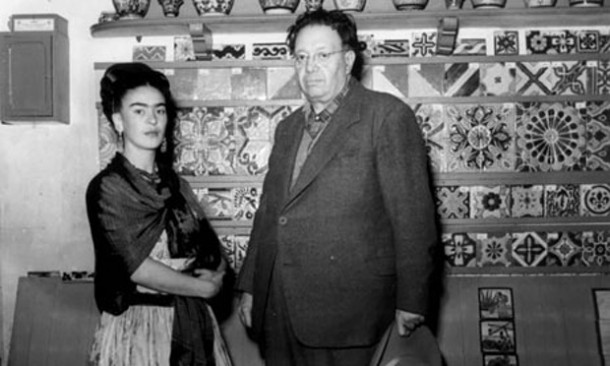The Detroit Institute of Arts is exhibiting “Diego Rivera and Frida Kahlo in Detroit” from March 15 to July 12. The exhibit contains some of Kahlo’s and Rivera’s most spectacular work. It is covered in vibrant colors and bustling with visitors. Although, fascinating and awe-inspiring, “Diego Rivera and Frida Kahlo in Detroit” is riddled with a forgotten history.
In 1932 Wilhelm Valentiner who was the director of DIA commissioned Diego Rivera to paint 27 frescoes. The project would be called “Detroit Industry Murals”. The plan was to reflect the booming motor industry, the industrial city of Detroit, and the laborers who were behind it all.
At the time, the rate of unemployment in Detroit was high. There was civil and political unrest between the workers and the factories. The city was at the brink of collapsing. “Detroit Industry Murals” strived to remind the citizens of Detroit of the city’s strength. Seven years after the mural was commissioned the country was catapulted into the Second World War and Detroit returned to its rightful place as a booming industrial city.
Fast-forward seventy-four years later: the city has collapsed. The Motor City has been gutted and stripped like an abandoned Cadillac left on the side of the road. The city declared bankruptcy and creditors, politicians, and the citizens of Detroit are looking for a way to quickly gain capital. In desperate search all eyes turn to the DIA’s prized art collection. Christie’s Auction House comes to the city to appraise the art collection and declares that the city-owned artwork is worth millions of dollars. The city’s artworks including its pieces representing Detroit cultural heritage are in jeopardy.
However, a plan is brewing. With the combined efforts of private foundations, the museum, and the state of Michigan enough money would be raised to keep the culture-hunting creditors away. The plan was approved. Works like “Detroit Industry Murals” were saved, and the Detroit of Institute of Arts maintains its extensive collection.
Without having to worry about the creditors, the DIA was able to continue showcasing exhibits that represented the cultural richness of Detroit. Two years later, “Diego Rivera and Frida Kahlo in Detroit” reminds the viewers of the love of Detroit’s culture and heritage that is untarnished by Detroit’s financial struggles.
“Diego Rivera and Frida Kahlo in Detroit” attempts to represent the cataclysmic relationship that occurs with love. In the expansive artworks, the viewers can see the dedication that Kahlo and Rivera had in their artwork and the volatile yet passionate love between the two infamous artists.
The exhibit is overpowering. It leads the viewers to each of the artworks and leaves them wanting to learn more about Kahlo, Rivera, and the city of Detroit. At its core, “Diego Rivera and Frida Kahlo in Detroit” represents the passion and love that people have for the city of Detroit. It is a love that results in nearly a hundred combined artistic pieces from Rivera and Kahlo. It is love that is undying and a flaming light in Detroit’s darkest hour.

